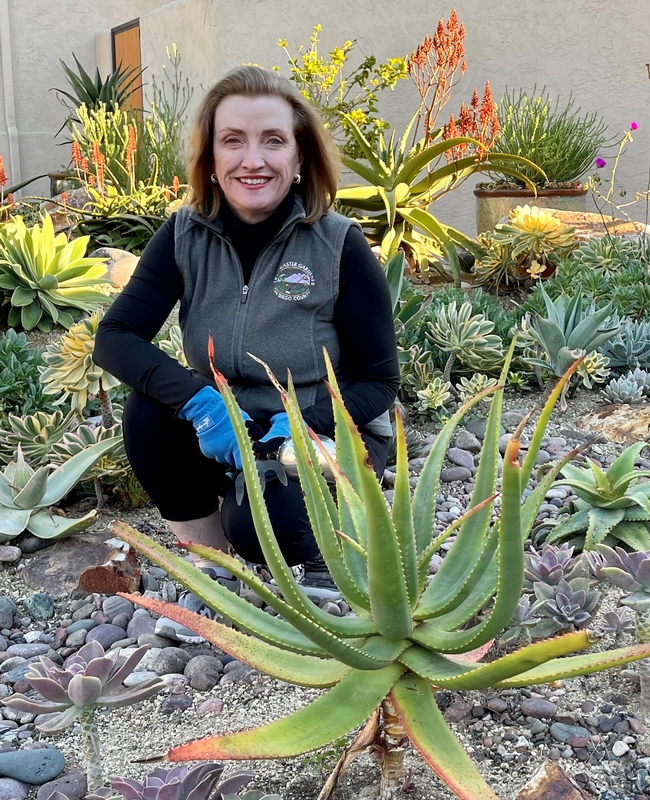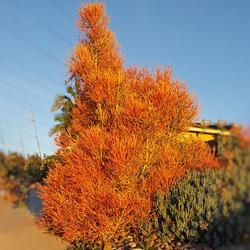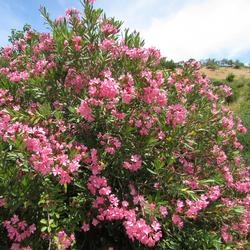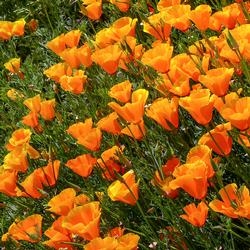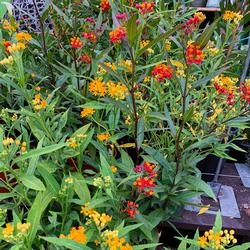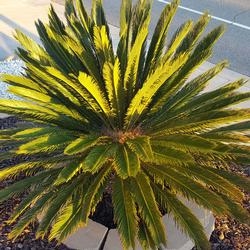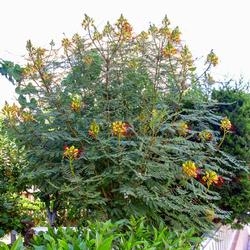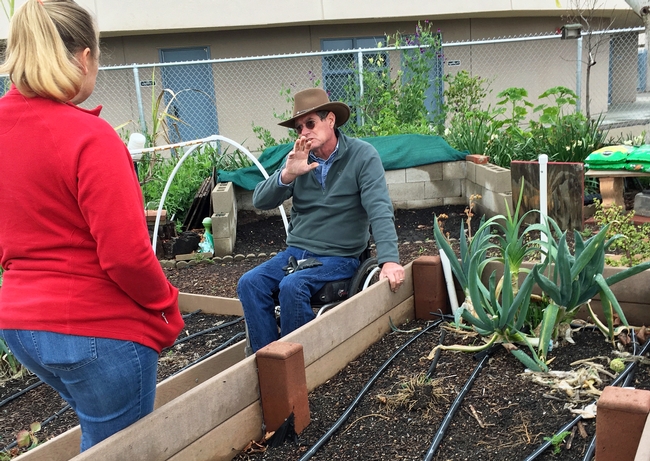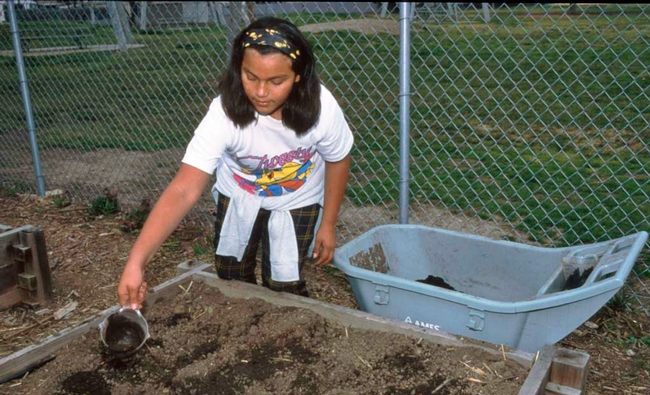Posts Tagged: gardeners
How to Find a Praying Mantis in the Wild
If you're trying to find a praying mantis in the wild, go where the food source is. Sounds pretty easy, right? But oh, they're camouflaged. They lie...
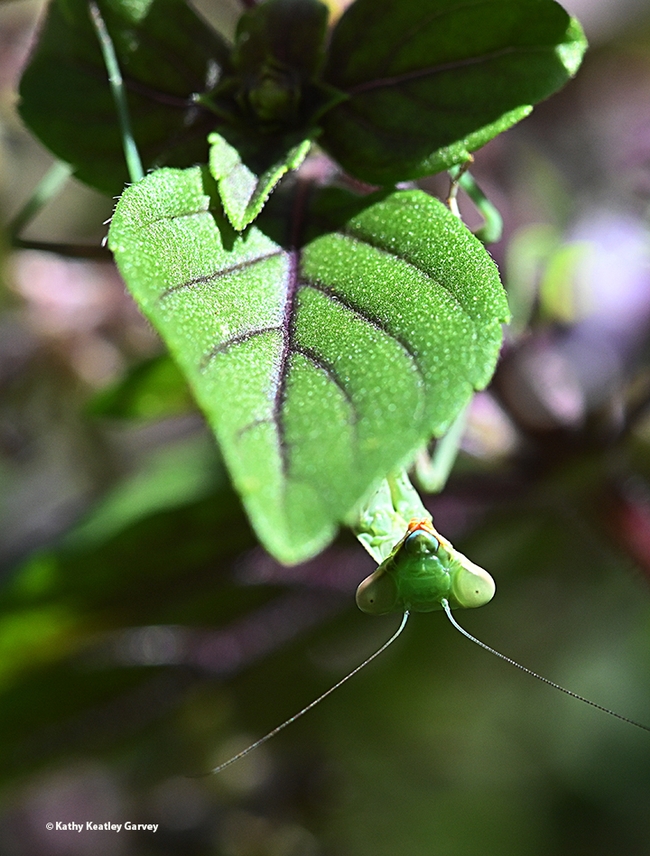
A praying mantis, a Stagmomantis limbata, hides beneath an African blue basil leaf in a Vacaville pollinator garden. (Photo by Kathy Keatley Garvey)
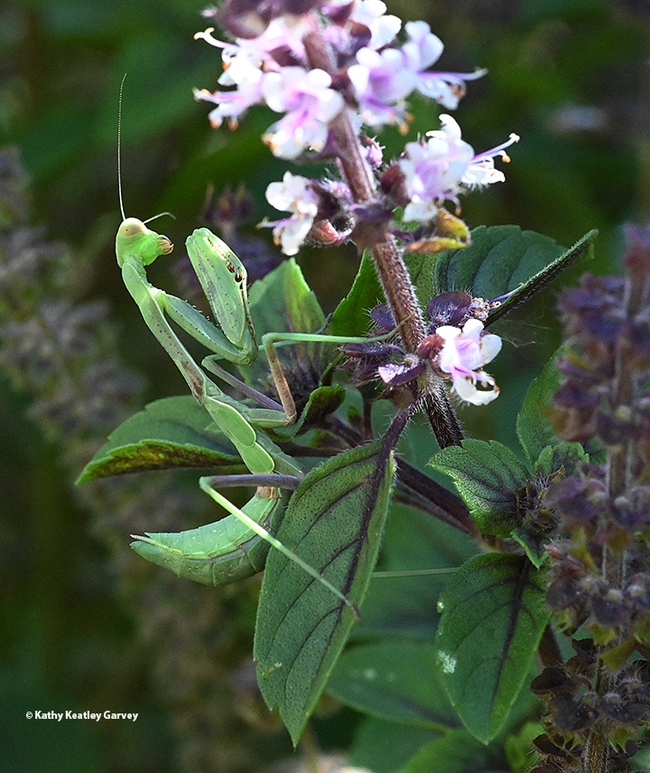
This praying mantis, a Stagmomantis limbata, hanging out in the African blue basil leaf, scouts for bees. (Photo by Kathy Keatley Garvey)
Master Beekeeper Cheryl Veretto: She Loved Bees, Plants and People
Cheryl Veretto was the first to step forward. She and 51 other beekeepers had gathered that day in September 2016 at the Harry H....
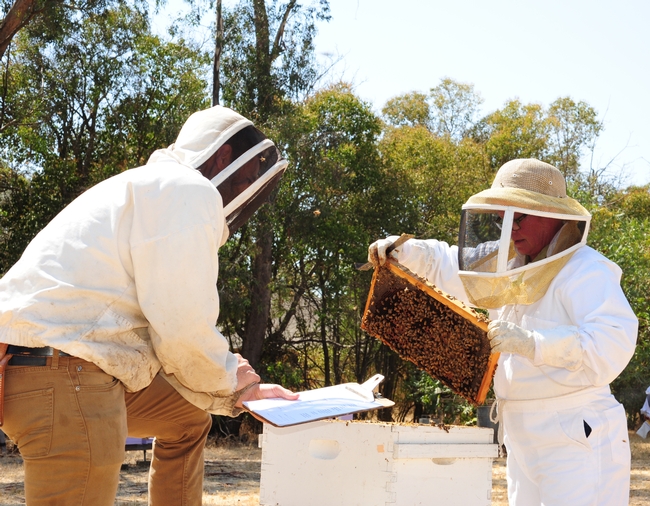
Cheryl Veretto was first in line to take the California Master Beekeeper Program practical test administered in September 2016. With her is UC Davis research associate Charley Nye, CAMBP examiner and manager of the Laidlaw facility. (Photo by Kathy Keatley Garvey)
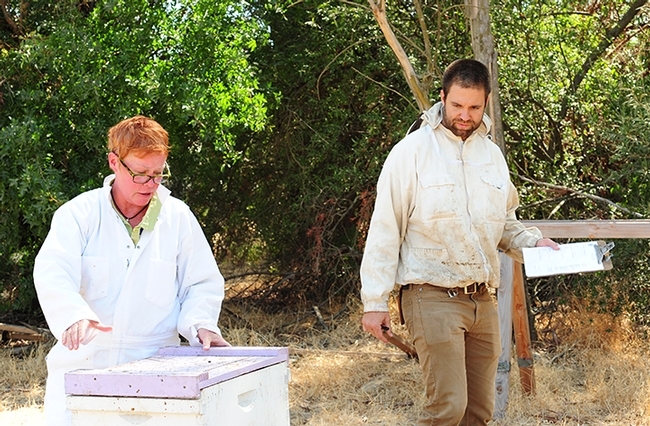
With their veils off in this portion of the CAMBP practical test, examiner Charley Nye watches Cheryl Veretto finish the last steps of her test. (Photo by Kathy Keatley Garvey)
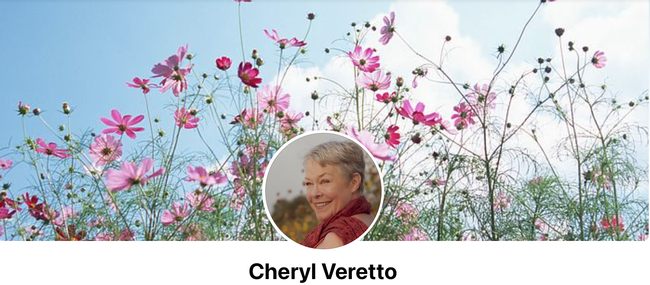
Cheryl Veretto's Facebook page.
Drought-tolerant plants can save water, but beware of those that are toxic
UC Master Gardener Francie Murphy was pruning the succulents in her San Diego front yard when an unfortunate accident catalyzed her commitment to communicating the dangers of toxic plants. She trimmed a stem on her drought-tolerant pencil milk bush and milky sap spurted into one eye, causing stinging pain.
“I tried to wipe it out, and in doing so got in both eyes. I was blinded. The pain was unbelievable,” she said.
A nearby friend rushed her to the emergency room where the doctor diagnosed chemical burns to her corneas and washed her eyes with two liters of saline water each. Murphy removed the plant from her garden, but saw it growing throughout her community.
“I knew we had to do something,” she said.
Drought-tolerant plants like cacti, yucca, agaves and aloes have adaptations to protect themselves from wildlife in search of the moisture within their leaves and stems. They have spikes or spines to ward off people and animals. Other plants don't have outward signs of danger. Fire sticks, also known as sticks on fire and pencil cactus and by its scientific name Euphorbia tirucalli, is a very popular succulent in frost-free areas. Its vertical growth habit and showy soft green to reddish-gold stems make it a striking landscape specimen. A native of southern Africa, the smooth, coral-like stems look deceptively harmless. The sap is toxic.
“Fire sticks should be planted far from walkways, in the back of the landscape, where you can see them, but not touch them,” said UC Cooperative Extension natural resources advisor Chris McDonald. “When trimming the plant, wear long pants, long sleeves and eye protection. If the plant is tall, consider protecting your face.”
After Murphy shared her story about these plants with other Master Gardeners, UCCE San Diego gathered a team and worked with colleagues to secure funding from the County of San Diego to develop a website and handouts to inform the community about readily available yet toxic drought-tolerant plants being planted into California landscapes.
The handout can be downloaded from the Plant Safely website (https://ucanr.edu/sites/PlantSafely/). The materials were quickly distributed to nurseries, garden events and Master Gardener help booths, such as at farmers markets, home shows and fairs, and other educational events. A key feature of the website is a database of nearly 100 plants (which can be found here) with photos and descriptions that explain how they are unsafe and how they can be used safely in the landscape. (https://ucanr.edu/sites/PlantSafely/Common_Names/)
Some common yet toxic landscape plants included in the database are:
|
|
|
|
|
|
|
|
|
|
|
“These potentially harmful plants are grown widely in many parts of California,” McDonald said. “It's important to promote drought-tolerant landscapes, and we must also do it in a way that preserves public health.”
View the UC Master Gardener video about safely planting fire sticks (Euphorbia tirucoli):
UC Master Gardener helps make San Diego gardens friendly and inclusive
Stephen Cantu, a UC Master Gardener in San Diego County UC Cooperative Extension, is well aware of ways to improve accessibility and inclusiveness in gardening for people with mobility issues, reported Lisa Deaderick in the San Diego Union-Tribune.
Cantu, who has used a wheelchair for 37 years due to a job site accident, identifies obstacles and solutions that help people of all abilities benefit from the joys of tending a home garden. He is active in the UCCE Master Gardener Association program that assists community members in designing garden spaces for maximum accessibility called Friendly Inclusive Gardening (FIG).
FIG teaches people how to implement the principles of universal design to make home, school and community gardens safer and more accessible to people with physical disabilities, seniors with mobility issues and young children. A workshop scheduled for March 21 had to be postponed in order to comply with efforts to reduce the spread of COVID-19, so Deaderick published a Q&A with Cantu to share how people can start a small garden at home while waiting out the coronavirus.
He said FIG is not just for wheelchair users. "In other words, a garden designed for the whole family to use, from young children to grandma and grandpa," Cantu said.
He recommends new gardeners start simple and build on success.
"Start out with a small kitchen garden of mostly herbs, something that is in small containers that you can grow next to your kitchen. . . Don't buy anything until you have an understanding of your needs. For a small garden, all you really need are your hands, a pair of gloves, some soil, and a few herbs," Cantu said.
Read the whole interview on the San Diego Union-Tribune website and find much more gardening information for many California locations on the UC Master Gardener website.
Gardening provides stress relief in trying times
With many schools are closed due to the coronavirus crisis, families are educating and entertaining children at home. Susan Schena of The Patch provided nine enriching activities for housebound kids; for the third one she turned to UC Master Gardner Louisa R. Cardenas from the Los Angeles County University of California Cooperative Extension for advice.
"There are numerous free sites with kids' gardening and environmental activities," said Cardenas, who chairs the Los Angeles County Master Gardener Program School Garden Network. "While most resources focus on school-yard gardening, many activities may easily be applicable to home gardens or apartment living."
According to a Los Angeles Times article, gardening does more than keep the kids busy and enriched. It can relieve stress associated with trying times. The article cited research in the Netherlands in which a test group performed a stressful activity for 30 minutes, and then were randomly assigned them to garden outside or read a book indoors. The study found that both activities reduced the cortisol levels that trigger stress, but the people who gardened saw much lower cortisol levels and their positive mood restored, as opposed to the readers, whose moods got worse.
For gardening advice, Times reporter Jeanette Marantos spoke to Yvonne Savio, the now-retired long-time UC Master Gardener coordinator for UC Cooperative Extension in Los Angeles County. Savio writes the blog GardeninginLA.net.
You can plant your tomatoes in late March, Savio said, but wait until April to plant summer crops like eggplant, peppers and cucumber.
If the soil hasn't warmed up to at least 60 degrees, warm-season seedlings “just sit and pout at you,” Savio said. Worse, she said, the cool temperatures can stunt their future growth, destroying your efforts to get an early harvest.
There are plenty of garden tasks that can be accomplished while waiting for warmer soil. The Times article suggests:
- Feed your soil with good organic amendments such as compost and steer manure or organic potting soil for pots.
- Water it well and wait a week or two before planting, because the organisms create a lot heat as they break down, and can burn your tender seedlings. You'll know the soil is safe for planting when the temperature feels comfortable to your bare hand, said Savio.
- Try Savio's technique of burying 5-gallon nursery buckets among your plants (the kind with holes already in the bottom). Make sure the rim of the buckets are about 4 inches above ground, so you have room for mulch, and then fill those buckets with water once or twice a week to force moisture — and roots — deeper into the ground.
For more at-home gardening information, find your local UC Master Gardener program website here:
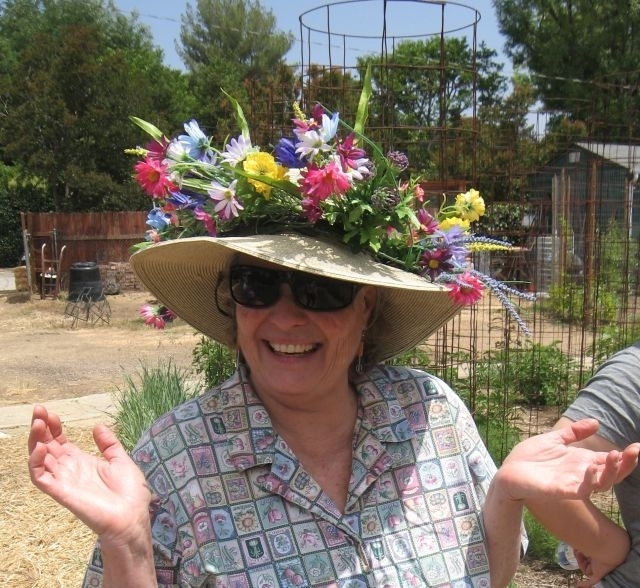
Yvonne Savio now volunteers as a UC Cooperative Extension Master Gardener.


